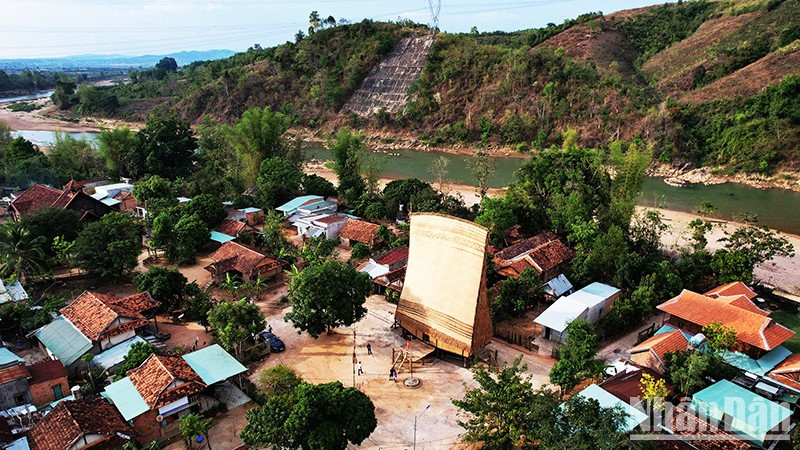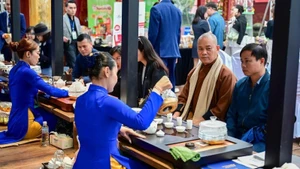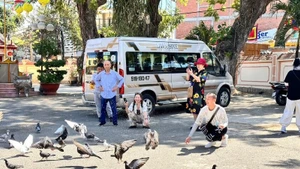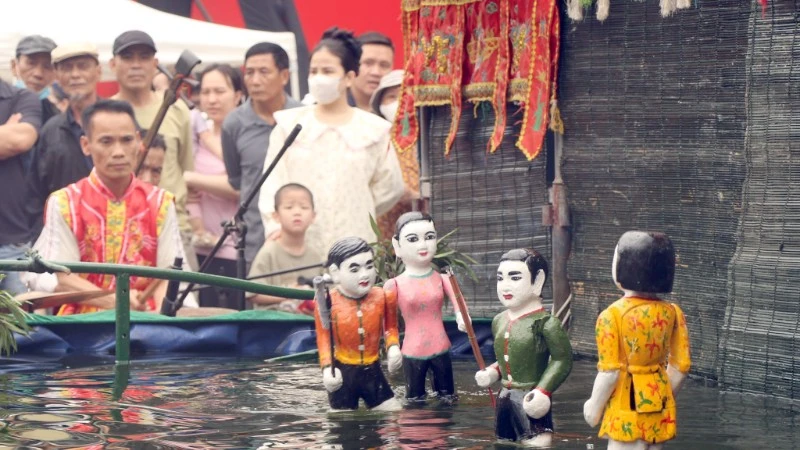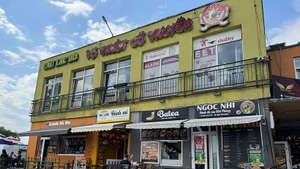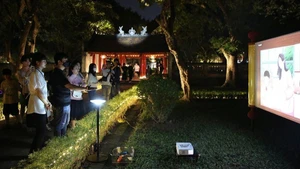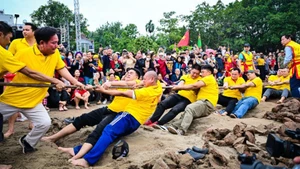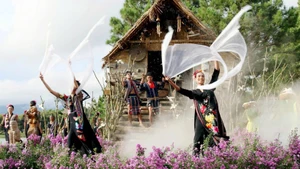To preserve and promote the unique cultural values of the ethnic minority groups in Kon Tum Province, as well as to prevent the erosion of culture due to the impacts of development, the province has taken measures to lay a spiritual foundation for sustainable development, social-economic growth, and the well-being of its people. Additionally, efforts have been made to mobilise resources and harness the potential and advantages in the cultural field to boost tourism. The province has approved and implemented numerous projects, programmes, and plans, including the Plan for the Preservation and Promotion of Traditional Costumes, the Project to Preserve and Promote the Gong Cultural Heritage, the Plan for the Preservation and Promotion of Nha rong (traditional soaring communal houses) of Ethnic Minorities, and the Inventory of Intangible Cultural Heritage in the region. These initiatives have been implemented in parallel to preserving and developing traditional culture linked to community-based tourism promotion.
Over 60 years old, A Biu shared that at his peak, he owned nearly 20 sets of gongs, but he has given them away to villages and districts both within and outside the province. Now, he only has seven sets of gongs left at home, including three priceless sets: the Lao Gong, Bom Pat, and Klang Brong. These three sets of gongs hold unforgettable memories for him.
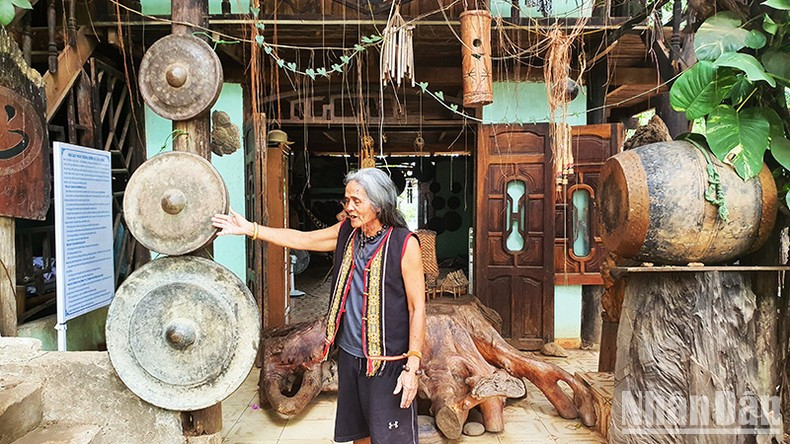 |
| A Biu enthusiastically introduces his gong collection to tourists. |
A Biu's home, also known as the A Biu homestay, has become a well-known community tourism destination. It attracts culture lovers from inside and outside the country whenever they pass through Kon Tum. The homestay consists of two long houses spanning 120 square metres, a dining area specialising in traditional Ba Na dishes, and notably, a front yard transformed by A Biu into a "stage" for performing gongs, the xoang dance, and campfire activities. These performances are presented by A Biu, his family members, and the artisans from the village. This local art troupe, formed by A Biu, has become a key player in preserving the unique intangible cultural heritage of the Central Highlands, regularly participating in traditional cultural festivals of the ethnic groups.
In addition to the economic benefits, A Biu also hopes to preserve, maintain, and promote the cultural values of his ethnic group through homestay tourism. Thanks to the attractive services linked with the Ba Na people's cultural identity at the tourist site, the homestay receives an average of three to four groups of guests per month, with each group consisting of 10 to 25 people. The average monthly income from tourism, after deducting expenses for staff, food, and artisan fees, brings in a profit of 10 to 25 million VND for his family.
Currently, in Kon Tum Province, many traditional cultural villages are being supported and prioritised by local authorities, preserving and promoting cultural heritage connected to developing community-based tourism. These villages include Kon K'tu in Dak Ro Wa Commune, Kon Tum City; Bar Goc Village in Sa Son Commune, Sa Thay District; Kon Pring Village in Dak Long Commune, Kon Plong District; Kon Trang Long Loi Village in Dak Ha Town, Dak Ha District; and Dak Rang Village in Dak Xu Commune, Ngọc Hoi District. These villages still maintain traditional gong ensembles, weaving, wine-making, and related ritual practices. The locals are increasingly open to welcoming tourists into their villages to explore and experience their culture.
Meritorious Artisan Y Lim, who manages the Kon Pring community tourism village, said: "In the past, the Kon Pring villagers worked under the sun and rain to cultivate crops, and they only earned around 50 million VND per year. However, when we started tourism activities, we could earn 10-15 million VND per month..."
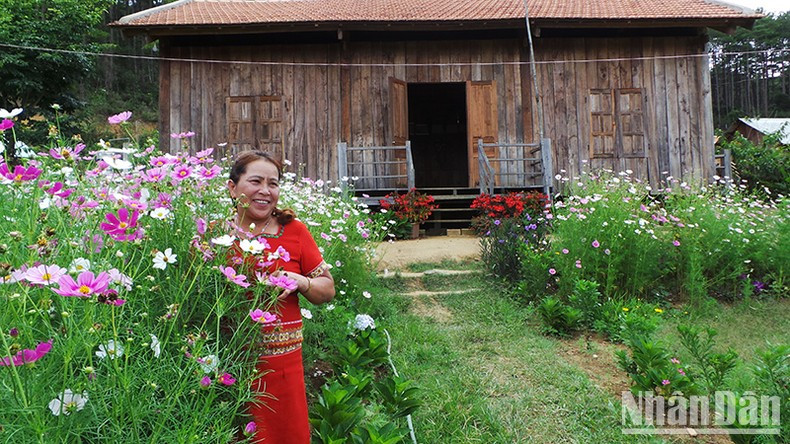 |
| Y Lim is in front of her homestay. |
Y Lim is a pioneer in her village in developing community-based tourism. After receiving support from the district to build a house on stilts to welcome guests, she boldly borrowed 16 million VND to purchase bedding and mattresses and furnish the interior. "After three months of operation, I paid off all the debt. Gradually, I saved over 360 million VND and decided to invest it all to build another house with three fully equipped bedrooms", she said. What’s noteworthy is that she always shares her work with the villagers, who often come over to help her cook, serve guests, and contribute to increasing their income.
Not far from there, Dinh Thi Dien, a Mo Nam ethnic woman, learned about tourism from Y Lim. "The challenge in Kon Pring Village right now is the people. The locals are still not used to interacting in tourism because they are too shy. Now, I have to find ways to identify young people in the village who are capable and train them so that they can help replace me in developing tourism for the community when I get older. Dien is one of the few", Y Lim shared.
In addition to running her homestay, Y Lim frequently opens classes for the village children to preserve the cultural beauty of the Mo Nam ethnic people. She also spends her own money to maintain and expand the Kon Pring gong performance group. Meanwhile, Dinh Thi Dien, in addition to her direct promotions, has created a social media account to advertise and attract tourists from far away to visit her hometown.
Delighted by her experiences at the Kon Pring community tourism village, Nguyen Thi Diu, a tourist from Ho Chi Minh City, shared: “I have travelled to many places, but the experiences here, being immersed in the nature and culture of the locals, are truly unique. I have enjoyed the sound of the gongs, tasted local specialties, watched the xoang dance, and learned about weaving and how to build traditional soaring communal houses… Immersing myself in the cultural atmosphere here is wonderful”.
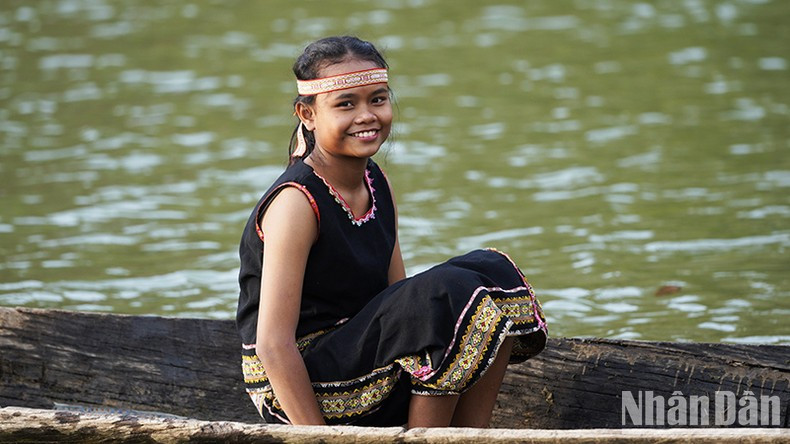 |
| The beauty of a Ba Na child on the poetic Dak Bla River. |
Director of Kon Tum Provincial Department of Culture, Sports, and Tourism, Nguyen Van Binh, stated that community-based tourism not only contributes to changing the appearance of many villages and hamlets of ethnic minorities but also significantly improves the lives of local people. It also plays a vital role in preserving, promoting, and spreading the distinctive cultural values of ethnic minorities in Kon Tum Province.
Kon Tum Province has been actively promoting the importance of these efforts, especially among the younger generations, to help the people understand the value and importance of the cultural identity of each ethnic group. This awareness encourages them to preserve and promote their traditional cultural values. Additionally, the province is leveraging the community's collective resources, managing and promoting traditional culture tied to developing community-based tourism, aiming to foster sustainable socio-economic development while ensuring national security and defence. They also organise vocational training, cultural management classes, folk art activities, and community-based tourism skills development to serve the tourism industry.
